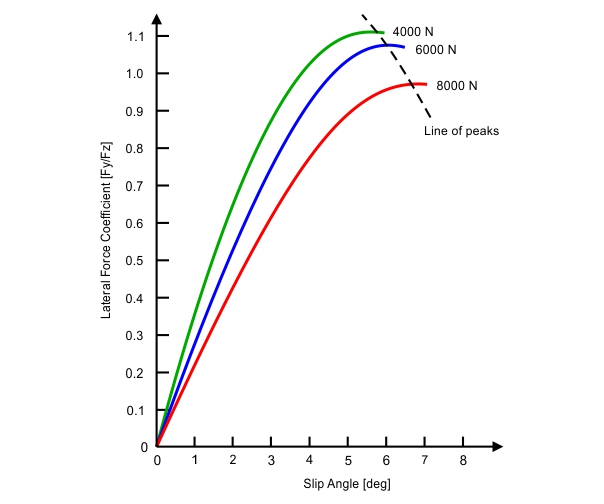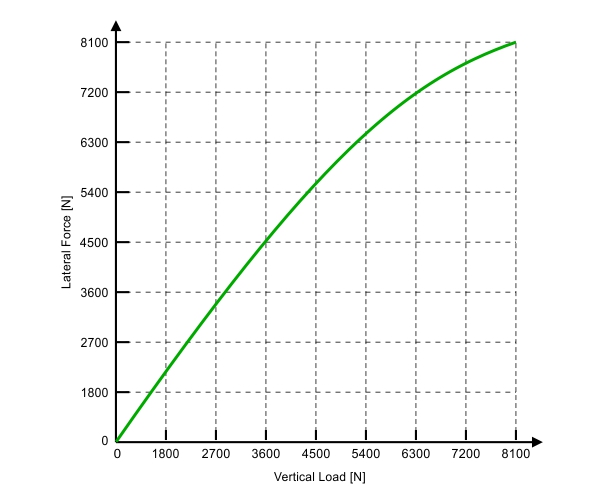Quote:
Originally Posted by Isaac Zachary

I don't think the downforce converts to more traction linearly. Maybe it would if you could size the tire as downforce is increased or decreased. In other words there's a point where traction increase isn't as much as the amount of weight added.
However, inertial weight does convert to inertia linearly. Double the weight and you double the inertia.
|


"This graph can provide a lot of information. As you can see, the lateral force coefficient actually decreases by increasing vertical load."
http://racingcardynamics.com/racing-...lateral-force/

But those graphs suggest that there should be proportionally more tyre grip.
Quote:
Originally Posted by Isaac Zachary

Why do big heavy vehicles take longer to stop even if they have enough braking power to lock the wheels?
|
I thought the reason heavy vehicles take longer to stop is higher tyre pressures, and harder rubber, less grippy compounds. But maybe it isn't linear, those graphs suggest better lateral grip to vertical load ratios at lower loadings. (not necessarily the same as braking but I am assuming they are)
According to those graphs, it would seem that reducing weight can increase your cornering speed due to the tyres being proportionally more grippy, and give you more grip
proportionally than adding downforce. Of course downforce comes with no increase in mass, so is still better for grip.